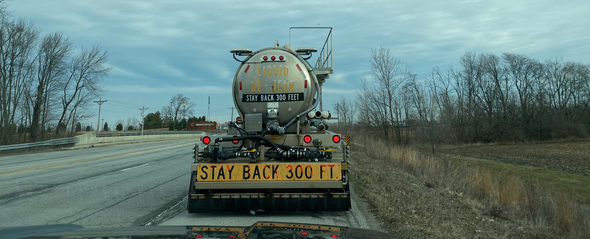INDIANA — In addition to the Indiana Department of Transportation’s snow and ice removal operations during winter storm events, the agency also pre-treats roadways with brine solution prior to winter weather if conditions allow. This typically occurs 24 to 48 hours before precipitation begins to give time for crews to apply brine solution and time for it to dry and adhere to the surface of the road. Below are answers to some frequently asked questions about pre-treatment of state roadways.
What is brine?
Salt brine is an anti-icing solution made up of water and 23.3 percent salt that is used to prevent snow and ice from bonding to pavement. Brine is effective at temperatures as low as -5 degrees Fahrenheit and can be mixed with other chemicals to lower the freezing point if necessary. Compared to salt, brine is fairly inexpensive at just pennies on the dollar. Brine solution also stays in place better and longer than salt crystals because it is applied as a liquid and stays where it is directed. Solid salt crystals can bounce off the road as they are spread along a route.
Why does INDOT pre-treat roadways?
INDOT pre-treats roadways ahead of winter weather to prevent snow and ice from bonding to pavement and creating slick spots. Pre-treatment occurs 24 to 48 hours prior to a weather event, even when temperatures are above freezing to provide an extra layer of protection, which makes clean-up easier once precipitation starts to fall. Brining also is used as a preventative measure for frost and/or freezing fog that occurs when temperatures, high humidity, low cloud cover, and low wind can create hazardous conditions, especially on elevated surfaces and bridges.
How long does it take to pre-treat roadways?
Individual snow routes are typically 1 1/2 to three hours in length. It takes an INDOT unit approximately 12 to 16 hours to complete all routes prior to a storm.
Does rain wash away brine after it’s been applied?
If temperatures are above freezing as a weather system approaches, rain may fall before changing to snow or ice. Light rain (amounts up to 0.4 inch) will not wash away brine from a surface if it has had time to completely dry and adhere to the roadway. Forecasted rain totals are taken into consideration when deciding whether or not to pre-treat.
How is the decision made to pre-treat roads?
Prior to a weather event, INDOT utilizes a Maintenance Decision Support System (MDSS) that provides weather forecasts, pavement temperatures and recommendations on treating various surfaces. During an event, INDOT relies on reports from the field in addition to forecasts and MDSS when making treatment decisions. Predictions of accumulating snow and ice are main reasons why INDOT may pre-treat a roadway, but freezing fog and heavy frost are also scenarios where pre-treatment is effective.
This is general information regarding pre-treatment of state roadways and may vary slightly depending upon specific conditions in a geographic area. In addition, bridges, overpasses and elevated surfaces may be treated more heavily as they tend to freeze first. For more information about INDOT winter operations, visit www.indotwinterops.com.
Stay Informed
Get updates on INDOT projects and programs via:
- Facebook: facebook.com/indianadepartmentoftransportation
- Twitter: @INDOT
- CARS 511: indot.carsprogram.org
- Mobile App: iTunes App Store and the Google Play store for Android







